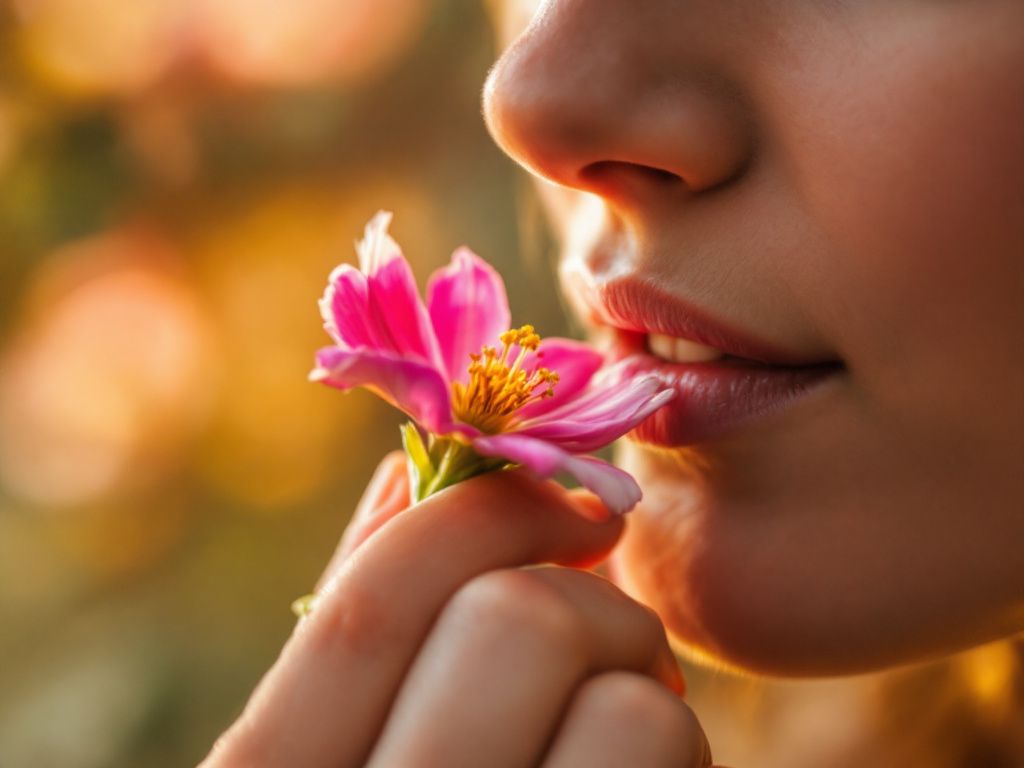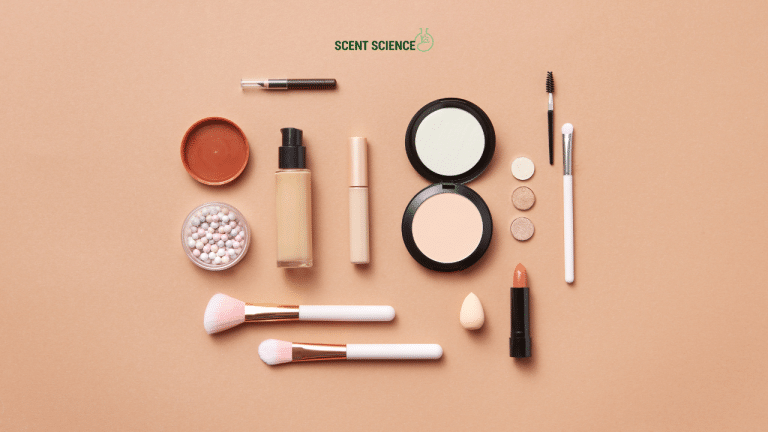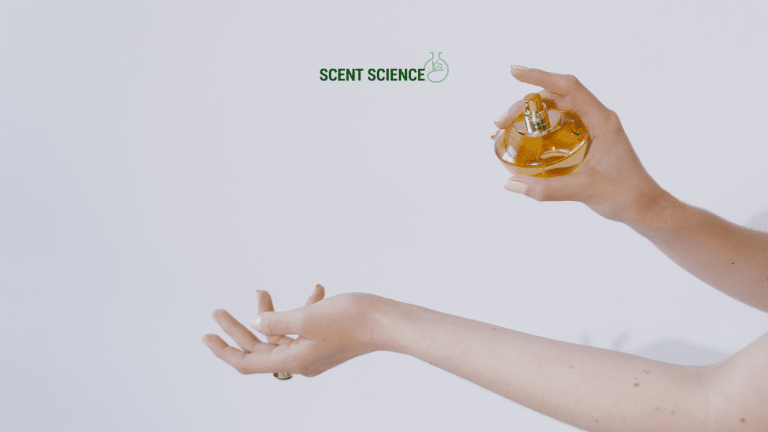If you’ve ever wondered why the smell of freshly baked cookies makes you feel warm and nostalgic or why a whiff of a long-forgotten perfume connects you to distant memories, you’re diving into the fascinating world of scent perception. The journey isn’t just about identifying a smell, it’s a dive into how our brain interprets this invisible cloud around us. Understanding what’s going on can indeed feel like unraveling a mystery—that’s both exciting and deeply connected to our daily lives.
Table of Contents
ToggleHow Do We Recognize Scents?
Let’s kick things off by discussing our scent detectors—those things sitting right in the middle of our faces, our noses. But trust me, noses aren’t just there for decoration.
Your nose has something called olfactory receptors. Think of them like little locks that only certain keys (scent molecules) can open. There are about 400 different types of these receptors, each specialized to sense specific odor molecules. Once a scent molecule settles on a compatible receptor, a signal is shot off to the brain, and voilà—you can smell.
Now, here’s where it gets super interesting. Different scents are a result of various combinations and sequences of these molecular keys fitting into the locks. Sort of like composing a song or a painting—endless combinations create endless possibilities.
The Journey of a Scent: From Nose to Brain
Now, how does a scent travel from our nose to our brain, where magic happens? The journey is quite the ride!
Once those signals from the olfactory receptors are fired, they head straight to the olfactory bulb. This is a part of your brain no larger than a thimble, but believe me, it packs a punch. The olfactory bulb processes the signals before sending them along to other parts of the brain like the limbic system.

Ah, the limbic system—a big deal here. It’s the emotional hub of your brain, processing feelings and linking scents with memories. That’s why a simple scent can induce emotions like happiness, sadness, or even hunger.
Why Scent Perception is So Personal
Curiously enough, scent perception isn’t a one-smell-fits-all kind of thing. Ever wondered why your friend might adore the smell of gasoline, while you can’t hit the back button fast enough? It boils down to genetic variation. Our individual genetic make-up actually determines which receptors we have active and how sensitive they are, creating a personal ‘scent map.’
Moreover, environmental factors like age, gender, and even the presence of certain diseases can alter scent perception. Basically, just as no two brains are alike in thought, no two noses smell the same.
Diving into Fragrance Science
Science like fragrance is a growing field, aiming to decode the unlimited combinations of scents. Experts in fragrance science—or perfumers—often resemble chemists in their workshops, mixing raw materials into something delightful.
The art behind creating popular perfumes is essentially chemistry magic at work. Perfumes have top notes, heart notes, and base notes, layered like a fragrant sandwich. This understanding allows perfumers to craft aromas that unfold strategically over time, playing a delicate dance on our noses and brains.
- Top notes: These are your first impressions, often citrus or ginger. They’re fleeting, making an initial statement.
- Heart notes: These lull the senses with floral or herb-like aromas and make up the perfume’s core body.
- Base notes: The quiet lingerers—think of vanilla or patchouli. They ground the scent, concluding the aromatic tale.
Scent Perception in Animals

Taking a departure for a moment—it’s not just humans that boast intricate scent processing. Animals are sensory powerhouses, often relying on scent as their primary sense.
Dogs, for example, are often described as seeing the world through their noses. Their super-powered sense of smell is due to owning around 300 million olfactory receptors compared to our mere 400. This makes them fantastic scent detectives, essential companions in security and medicine—think bomb detection dogs or those supporting diabetic patients.
Unraveling the Emotional Power of Scent
Dipping back into human scent perception—it’s more than just identifying a smell. Fragrances can alter our mood, productivity, and overall well-being, acting almost like a natural boost or balm. Think of discussions of aromatherapy or stories of people finding a particular scent that managed stress or anxiety—it’s less hocus pocus, more an interaction of scent molecules with our perceptive biology.
It’s a soothing fact that scent perception connects deeply with our emotions and memories, helping us establish a sense of stability or immerse in temporary indulgence during the chaos.
Practical Recommendations for Tuning into Your Scent World
Getting practical—it’s not just about knowing this knowledge but feeling and experiencing it. Here are a few suggestions on diving deeper into your own scent perception journey:
- Mindful sniffing: Take a moment each day to fully engage with different scents around you. Notice how they make you feel. Does lavender make you sleepy? Or is it grapefruit that gets you going in the morning?
- Explore diverse environments: Travel with your nose. Visit different markets, festivals, and parks, and let the explosion of scents tell their story. You might find new favorites or connected memories.
- Experiment with associations: Play around with pairing scents with activities. Maybe lemon for studying, as it reportedly enhances alertness, or sandalwood during meditation sessions.
- Keep a scent diary: Log down your experiences with new scents. Over time, patterns might just emerge, helping you understand personal preferences better.
The Future of Scent Research

Scent perception is undeniably intriguing, but there’s a lot more waiting to be discovered. Emerging research could soon change how we understand and manipulate scent for better therapeutic, culinary, or industrial means.
Biotechnological advances aim to better identify olfactory fingerprints and even recreate or enhance them, providing assistance where scent loss due to age or illness becomes lifestyle-impacting—for example, in anosmia.
In a roundabout way, renewing focus on scent in our daily routines reminds us of the small joys and deeply affective experiences that comprise human life. Fancy as it may sound, it’s a penchant for connectedness, taking cues from the seemingly invisible markers our senses detect.
Wrapping It Up
So, there you have it—an exploration into the captivating world of scent perception. Although scents are naturally unseen components of our environment, they’re powerful enough to reach the most emotional and joyous places within us. They tell stories, provoke emotions, and build bonds in a way nothing else quite does. Trust me, next time you catch a smell, take a moment. It’s much more than just a passing nuisance or pleasure—it’s science meeting perception, wrapped as one delightful present.
Frequently Asked Questions
What is scent perception?
Scents perception is the ability to identify and interpret scent signals as they appear in the direct environment. It is a perceptual feat that relies on the inner biological workings, including genes and past experiences, which can vary significantly from individual to individual[1].
How does humidity affect scent perception?
Humidity can significantly affect scent perception by influencing the movement and availability of odor molecules. High humidity can reduce the volatility of certain compounds, making them less likely to evaporate and reach olfactory receptors, while also potentially masking some smells and making others more pronounced[2].
What role do genetic factors play in scent perception?
Genetic factors play a crucial role in scent perception as they determine the structure and content of the olfactory system and receptors. Subtle differences or mutations in genes can influence odor perception, with changes to a single receptor potentially affecting how intensely an odor is perceived[1].
How do environmental and physical factors influence scent perception?
Environmental factors such as temperature, air pressure, and wind can influence scent perception. For example, higher temperatures can increase the volatility of odor molecules, while extreme temperatures can affect nasal sensory receptors. Additionally, physical states like fatigue can blunt smell perception, and treatments like chemotherapy can also impact olfactory abilities[1][2]. References
- NanoScent Labs. (2021). An Intro to the Perception of Smell.
- Stadler Form. (2023). Effects of weather and humidity on your sense of smell.








